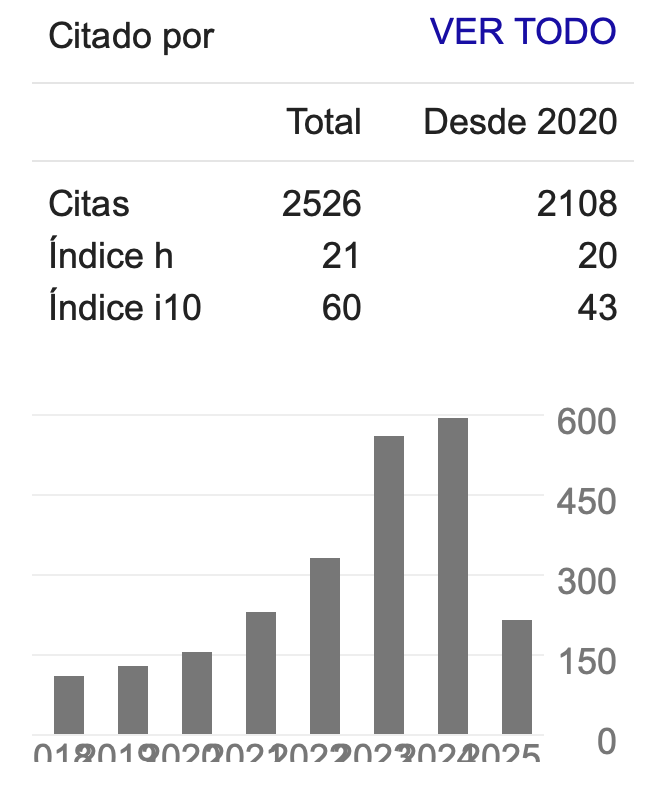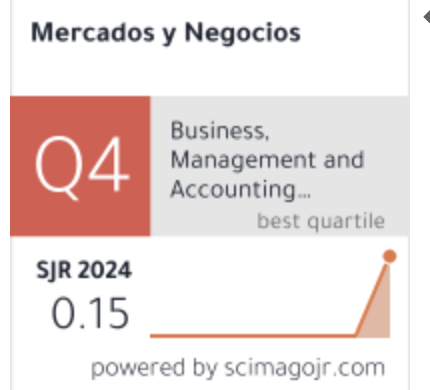La entrada de inversión directa exterior en el sector financiero y su efecto sobre la productividad de la economía mexicana
DOI:
https://doi.org/10.32870/myn.v0i21.5122Keywords:
inversión directa exterior, crecimiento económico, productividad, serviciosAbstract
Los servicios financieros constituyen bienes intermedios (inputs) y finales para el conjunto de los sectores de una economía, lo que los dota de una dimensión transversal. Dado que el output generado por estos servicios transversales afecta a la totalidad de la economía, cabe esperar que las externalidades derivadas de la entrada de la inversión directa exterior (ide) en el sector financiero sean mayores que las derivadas de la entrada de ide en el sector manufacturero. Sin embargo, hemos obtenido evidencia de que las externalidades negativas de la ide manufacturera son mayores que las derivadas de la ide financiera. Los factores institucionales como la alta aversión al riesgo de la banca y la falta de intensidad en el marco competitivo pueden considerarse factores explicativos del resultado obtenido (Haber y Musacchio, 2005; Schulz, 2006).References
Aitken, B. J., & Harrison, A. E. (1999). Do domestic firms benefit from direct foreign investment? Evidence from Venezuela. American economic review, 605-618.
Alfaro, L., Chanda, A., Kalemli-Ozcan, S., & Sayek, S. (2004). FDI and economic growth: the role of local financial markets. Journal of international economics, 64(1), 89-112.
Barajas, A., Steiner, R., & Salazar, N. (2000). The impact of liberalization and foreign investment in Colombia's financial sector. Journal of development economics, 63(1), 157-196.
Barquero, A. V. (2005). Las nuevas fuerzas del desarrollo. Antoni Bosch editor.
Blomström, M., & Kokko, A. (1998). Multinational corporations and spillovers.Journal of Economic surveys, 12(3), 247-277.
Blomström, M., Kokko, A., & Mucchielli, J. L. (2003). The economics of foreign direct investment incentives. In Foreign direct investment in the real and financial sector of industrial countries (pp. 37-60). Springer Berlin Heidelberg.
Blomström, M., & Persson, H. (1983). Foreign investment and spillover efficiency in an underdeveloped economy: evidence from the Mexican manufacturing industry. World development, 11(6), 493-501.
Blomström, M., & Wolff, E. N. (1994). Multinational corporations and productivity convergence in Mexico (pp. 243-257). Department of Economics, Stockholm School of Economics.
Caves, R. E. (1999). Spillovers from multinationals in developing countries: the mechanisms at work. Harvard University, Department of Economics, Cambridge, Massachusetts. Processed.
Crystal, J. S., Dages, B. G., & Goldberg, L. S. (2002). Has foreign bank entry led to sounder banks in Latin America?. Current Issues in Economics and Finance, 8(1), 1.
Cuadros, A., Orts, V., & Alguacil, M. (2004). Openness and growth: Re-examining foreign direct investment, trade and output linkages in Latin America. Journal of Development Studies, 40(4), 167-192.
De Mello Jr, L. R. (1997). Foreign direct investment in developing countries and growth: A selective survey. The Journal of Development Studies, 34(1), 1-34.
De Mello, L. R. (1999). Foreign direct investment-led growth: evidence from time series and panel data. Oxford economic papers, 51(1), 133-151.
Demirgüç-Kunt, A., Huizinga, H., & Claessens, S. (1998). How does foreign entry affect the domestic banking market?. World Bank Policy Research Working Paper, (1918).
Dolado, J. J., & Lütkepohl, H. (1996). Making Wald tests work for cointegrated VAR systems. Econometric Reviews, 15(4), 369-386.
Giles, J. A., & Mirza, S. (1999). Some pretesting issues on testing for Granger noncausality. Department of Economics, University of Victoria.(Mimeographed.).
Goldberg, L., Dages, B. G., & Kinney, D. (2000). Foreign and domestic bank participation in emerging markets: Lessons from Mexico and Argentina (No. w7714). National bureau of economic research.
Goldberg, L. (2004). Financial-sector FDI and host countries: New and old lessons (No. w10441). National Bureau of Economic Research.
Görg, H., & Greenaway, D. (2004). Much ado about nothing? Do domestic firms really benefit from foreign direct investment?. The World Bank Research Observer, 19(2), 171-197.
Granger, C. W., & Newbold, P. (1974). Spurious regressions in econometrics.Journal of econometrics, 2(2), 111-120.
Haber, S. (2005). Mexico’s experiments with bank privatization and liberalization, 1991–2003. Journal of Banking & Finance, 29(8), 2325-2353.
Haber, S. H., & Musacchio, A. (2004). Foreign banks and the Mexican economy, 1997-2004. Division of Research, Harvard Business School.
Hanson, G. H. (2001). Should countries promote foreign direct investment?.
Jordaan, J. A. (2005). Determinants of FDI-induced externalities: New empirical evidence for Mexican manufacturing industries. World Development, 33(12), 2103-2118.
Kokko, A. (1994). Technology, market characteristics, and spillovers. Journal of development economics, 43(2), 279-293.
Kokko, A. (1996). Productivity spillovers from competition between local firms and foreign affiliates. Journal of international development, 8(4), 517-530.
Kugler, M. (2006). Spillovers from foreign direct investment: within or between industries?. Journal of Development Economics, 80(2), 444-477.
Kumar, N. (1996). Foreign direct investments and technology transfers in development: a perspective on recent literature. United Nations University, Institute of Technologies.
Levine, R. (1997). Financial development and economic growth: views and agenda. Journal of economic literature, 35(2), 688-726.
King, R. G., & Levine, R. (1993). Finance, entrepreneurship and growth. Journal of Monetary economics, 32(3), 513-542.
Levine, R., & Zervos, S. (1996). Stock market development and long-run growth. The World Bank Economic Review, 10(2), 323-339.
Lütkepohl, H. (1993). Introduction to multiple time series analysis.
Markusen, J. R. (1995). The boundaries of multinational enterprises and the theory of international trade. The Journal of Economic Perspectives, 9(2), 169-189.
Mattoo, A., Rathindran, R., & Subramanian, A. (2001). Measuring services trade liberalization and its impact on economic growth: an illustration (Vol. 2655). World Bank Publications.
Meltzer, A. H. (1998). Financial Structure, Saving and Growth: Safety nets, regulation, and risk reduction in global financial markets.
Mihaljek, D. (2006). Privatisation, consolidation and the increased role of foreign banks. BIS papers, 28, 41-65.
Porta, R. L., Lopez-de-Silane, F., & Zamarripa, G. (2002). Related lending (No. w8848). National Bureau of Economic Research.
Ramirez, M. (2000). Foreign direct investment in Mexico: a cointegration analysis. The Journal of Development Studies, 37(1), 138-162.
Rodriguez-Clare, A. (1996). Multinationals, linkages, and economic development. The American Economic Review, 852-873.
Schulz, H. (2006). Foreign Banks in Mexico: New Conquistadors or Agents of Change?.
Sidaoui, J. J. (2006). The Mexican financial system: reforms and evolution 1995-2005. BIS Papers, 28, 277-93.
Yamada, H., & Toda, H. Y. (1998). Inference in possibly integrated vector autoregressive models: Some finite sample evidence. Journal of Econometrics,86(1), 55-95.
Trevino, L. J., Thomas, D. E., & Cullen, J. (2008). The three pillars of institutional theory and FDI in Latin America: An institutionalization process.International Business Review, 17(1), 118-133.
Walter, I., & Gray, H. P. (1983). Protectionism and international banking: Sectorial efficiency, competitive structure and National policy. Journal of Banking & Finance, 7(4), 597-609.
Zapata, H. O., & Rambaldi, A. N. (1997). Monte Carlo evidence on cointegration and causation. Oxford Bulletin of Economics and statistics, 59(2), 285-298.
Downloads
Published
How to Cite
Issue
Section
License
Mercados y Negocios by Department of Mercadotecnia y Negocios Internacionales. University of Guadalajara is licensed under a License Creative Commons Attribution-NonCommercial 4.0 International.
The author retains the copyright.








